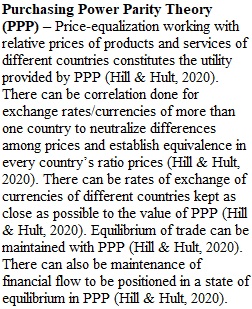


Q When preparing for your discussion post on this case, it is recommended that you read through it several times. • Read through it the first time to familiarize yourself with the prompt. • On the second reading, consider your assigned role in the situation, and let that guide your perspective. Look deeper at the details: facts, problems, organizational goals, objectives, policies, strategies. • Next, consider the concepts, theories, tools and research you need to use to address the issues presented. • Then, complete any research, analysis, calculations, or graphing to support your decisions and make recommendations. If an organization’s revenue and expenses occur primarily in currency, there is a risk of financial loss due to exchange rate fluctuations between a transaction completion and the accompanying financial transaction (think: delay between paying with a check and the money being withdrawn from your bank account) (Rózsa and Darabos, 2015). The exchange rate risk associated with a transaction can be managed with internal and/or external techniques. After completing the module’s reading, answer the following questions concerning Rózsa and Darabos’ (2015) article: The chosen exchange rate as the possibility of reducing the risks of currency exchange transactions (Links to an external site.). A. Complete the following: 1. Select two theories and evaluate the uses and limitations of how currency exchange rates are determined for each. 2. Select one of the internal exchange rate risk management techniques discussed by Rózsa and Darabos (2015) and develop an example of how the technique could be effective. You should utilize notional numbers to complete your example. For example, you may have a transaction that was made at 100 Yen (at the point of sale), but then the bank transaction was not completed until 12 hours later in Euros. You could show how fluctuations in the exchange rate at the time of sale and bank transaction changed. 3. Explain in your own words what the authors’ problem statement was (hint – it is not just a restatement of the title of the article). 4. Does the article’s analysis provide sufficient evidence, in the Kereskedo Ltd. example, to analyze the problem? Provide specific supporting evidence of why or why not. B. When responding to at least two classmates, provide substantive feedback on why the example your peer developed in question “b” was not accurate and/or the limitations of their example. You must support your response to your peer with well-researched information (you may have to complete calculations of your own to demonstrate why their analysis was not accurate or the limitations that exist). Ensure you support your responses with scholarly reference material using APA formatting. REFERENCES Rózsa, A., & Darabos, É. (2015). The chosen exchange rate as the possibility of reducing the risks of currency exchange transactions. Annals of The University of Oradea, Economic Science Series, 24(1), 923–926. Consult the Discussion Posting Guide for information about writing your discussion posts. It is recommended that you write your post in a document first. Check your work and correct any spelling or grammatical errors. When you are ready to make your initial post, click "Reply." Then copy/paste the text into the message field, and click "Post Reply." To respond to a peer, click “Reply” beneath her or his post and continue as with an initial post. EVALUATION This discussion will be graded using the discussion board rubric. Please review this rubric, located on the Rubrics page within the Start Here module of the course, prior to beginning your work to ensure your participation meets the criteria in place for this discussion. All discussions combined are worth 32% of your final course grade.
View Related Questions